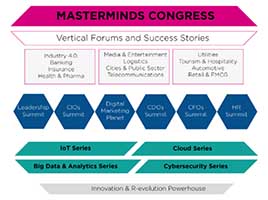Whatever size you are, digital transformation is now widely seen as a matter of survival. A recent study by Oxford Economics suggests that a majority of companies are planning to make the technological changes necessary to remain competitive into the future. However actual progress towards comprehensive digital transformation remains slow.

Where complex companies are growing fast and acquiring new subsidiaries at pace there is even more delay as leaders try to work out how best to incorporate the smaller companies into the technology landscape.
Organisations with large embedded ERP systems assume that adding their acquisitions into their existing system is the most efficient way to maintain a cohesive network. But at In Cloud Solutions we often hear the other side of the story when subsidiaries become frustrated because they have been told they must wait in line before they can be moved onto the parent company’s ERP.
Why wait?
But it doesn’t have to be this way. Parent companies can opt for a system that allows them to maintain control over their subsidiaries while also giving the smaller companies freedom to be agile and responsive – the very qualities that made them so attractive in the first place. Nurturing these dynamics, while leveraging the strength of the parent company, can be a key competitive advantage for larger organizations.
To maximize this, the parent company must provide subsidiaries with the tools they need to succeed while effectively managing the subsidiaries as a cohesive network. So now you start to see why waiting for full ERP is not the only answer – a 2-Tier approach is a really good alternative.
What is the 2-Tier Approach?
To give the smaller companies the best chance of success, parent companies need to keep things simple with access to straightforward financial, governance, and compliance processes which can be replicated across the subsidiary network. These can then be made to dovetail with its own processes while maintaining a constant flow of information to, from, and among the subsidiaries. This can be done be introducing a lighter cloud based ERP to the subsidiaries, which integrates directly with the parent company’s system. It can be done quickly and immediately without any need for delays.
Because IT resources may be limited it helps if the light software used to synchronize with the parent company is cost effective and simple to implement and use. At this point you will see why cloud is a no brainer as it is a much cheaper and more flexible delivery system for IT across the whole network of companies and doesn’t involve hardware.
Benefits of the 2-Tier Approach
Companies wanting to leverage a 2-Tier solution can use their current robust enterprise level solution and link it to a cluster of companies on “ERP lite” simply and quickly. They can do this by turning to any number of big name providers who can nominate a solution that readily integrate with the processes and best practices of the parent company. We suggest using a combination of S/4 Hana and Business ByDesign from SAP but there are others.
As long as the solution can do the following;
- Support cross-organizational processes to simplify and unify corporate and subsidiary operations
- Facilitate governance and streamline reporting of consolidated financial and operational results.
- Use built-in best practices to help subsidiaries manage customer relationships, human resources, projects, procurement, and their supply chains.
- Configure predefined workflows to match your unique business processes
- Work within the regulation of the countries you specify
Integrate corporate resources
Integrating corporate-approved processes with those of subsidiaries is a key benefit of the 2-Tier ERP approach.
It can simplify the collection of subsidiary financial information, facilitate the sharing of corporate services to subsidiaries, and reduce duplication of data models. It can also help a parent company deliver products and services to subsidiary markets more effectively.
Future Ready
When it comes to the digital future, such solutions have the advantage of positioning everyone to take advantage of digital trends. For example you will now have a backbone for hyper-connectivity across all companies and depending on your choice you will also likely have access to In-memory technology for real-time processing and advanced analytics. Other leading edge trends include state-of-the-art cybersecurity and cloud-based delivery for ease of use, management and support.
Add in the time saved by cutting duplication of efforts and responsibilities between subsidiaries and the parent company and you can see how a 2-Tier ERP approach can really build your competitive advantage. Why keep your subsidiaries waiting for all the advantages of an integrated ERP system? Contact your provider for a full run-down of options available or get in touch with a member of a global network like United Vars if you have several entities overseas.
About the research quoted;
Oxford Economics was commissioned by the SAP Center for Business Insight to conduct and analyze a survey of over 3,100 executives around the world about the opportunities and challenges facing companies as they attempt digital transformation. Fieldwork took place in 2017.




